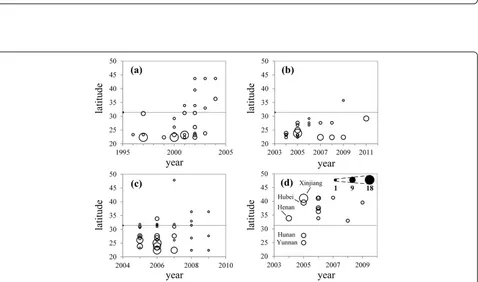Spatial, temporal and genetic dynamics of highly pathogenic avian influenza A (H5N1) virus in China
Full text
Figure




Related documents
As applications, we study the convex linear inverse problem and the split-equality problem in Hilbert spaces, and we give new algorithms for these problems.. Finally, numerical
Overall, the mgG-2 ELISA gave a high performance, with negative and positive predictive values of 96% for blood donors and a negative predictive value of 95% and a positive
The study was conducted to evaluate the normal sacropelvic parameters and curvatures of the spine and their correlation in asymptomatic Indian adults in relation
mahsena muscle tissues, liver, kidney and intestine and their intestinal parasites (trematodes, cestodes and nematodes) as well as sea water were analyzed for the
Энэхүү судалгаагаар малын тавлаг байдлыг хангасан болон тэжээллэг маллагааны ялгаатай нөхцөлд Сөнөд хонины махан ашиг шимийн гарц чанар, махны физик, химийн үзүүлэлт, тосны ба
The results showed that using bay leaf effect as in feed has significant difference (P<0.05) on lactic acid bacteria and Escherichia coli and significantly
Engineering, School of Health, Tehran University of Medical Sciences, Tehran, Iran• 3 BSc, Department of Occupational Health Engineering, School of Health, Isfahan




